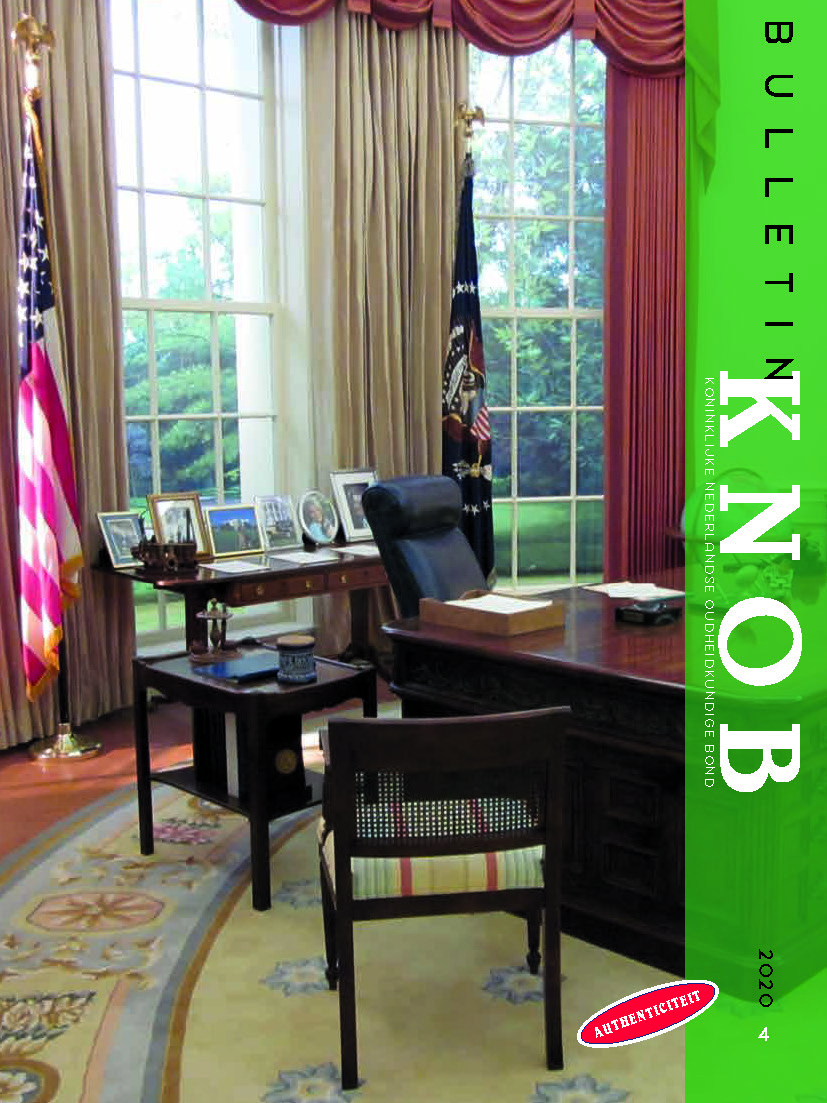Indexing ESCI / Scopus


The editors Preface to the theme issue 'Authenticity' Kees Somer Material authenticity or historical falsification. The KNOB and authentic historical substance Gabri van Tussenbroek Reconstruction and resistance. On material authenticity Freek Schmidt Genuine architecture. On authenticity and adaptive reuse Lex Bosman Authenticity and material. A consideration of the concept based on examples from (late)antiquity and the middle ages Lara Schrijver Always the real thing? Authenticity in the age of digital reproduction Steffen Nijhuis Landscape authenticity. The landscape as a living system, history and spatial experience Jaap Evert Abrahamse and Reinout Rutte The house as a mass product. Authenticity in post-war housing estates Noor Mens Form and context. On the role of authenticity in the evaluation of modern heritage Marie-Thérèse van Thoor Authenticity, a credible concept?
bij het themanummer 'Authenticiteit'
In 1917 the Koninklijke Oudheidkundige Bond (KNOB) published its ‘Principles and precepts for the preservation, restoration and extension of historical buildings’. They represented a break with the views on restoration held by P.J.H. Cuypers and Victor de Stuers. The Principles opposed the reconstruction or arbitrary completion of historical buildings because this resulted in historical falsification and the destruction of heritage objects as historical documents. In practice, however,
these principles were often disregarded. Moreover, during the post-war reconstruction period...
Reconstructions of vanished buildings are new creations, lacking unity of time, place and function. Because of this, arguments based on the theoretical principles of heritage preservation – which advocate the preservation of age- and evidence-related values and of historical building substance – are rarely pertinent. Nevertheless, reconstructions are not without danger, given that they relativize the value of historical materiality, leading to the ‘dissolution of the real monument’ (Glendinning 2013).
The evaluation of material remnants of the past...
This article is an appeal for independent, broad architectural-historical research prior to the redevelopment of buildings to protect their potential historical value and cultural significance. Authenticity is understood here as historicity and the article explores what it might signify in adaptive reuse, a growing sector in architectural design that is increasingly coming to be regarded as a separate discipline. In adaptive reuse strategies the building is viewed primarily as an architectural object that is to be given a ‘new life’. But does that allow sufficient attention to be...
It is not immediately clear whether the concept of authenticity can be applied to the architecture of (Late) Antiquity and the Middle Ages. If you were to apply the existentialist definition of the concept, you could say that an architectural element is authentic when it is what it purports or seems to be: a column, for example, should support something. Authenticity can also be understood in the sense of ‘initial’ and ‘original’. A brief survey of a few examples reveals the importance of originality and, in particular, of the function of the architectural element. Examples like the...
Walter Benjamin’s famous 1935 essay ‘The Work of Art in the Age of Mechanical Reproduction’ addresses the authenticity of a work of art as something beyond the merely material and technical. Benjamin constructs a broader notion of authenticity that includes ‘the life of things’ and is related to new techniques in artistic production. This broader sense of authenticity is used here to explore how it may help us to understand architecture in the age of digital reproduction. Two aspects of authenticity in Benjamin’s article are discussed: process reproduction and image...
Landscape authenticity relates to spatial quality and identity. Orientation in time and space are relevant, as are beauty, (multi)functionality, ecological variation and coherence. Owing to the diversity of connections and interactions between these aspects, landscape authenticity is a complex matter. This article contends that landscape authenticity can be understood by looking at the landscape as an integrated whole: as a living system, as history and as spatial experience. The landscape changes even without human intervention.
The legibility of the landscape is crucial to...
From the 1960s, Dutch mass housing construction was for a while dominated by modernism. Housing developments shot up in double quick time – after the existing cultural landscape had first been totally erased. In both typology and architecture, planners and architects strove to avoid any sense of continuity between these new estates and their predecessors: architecture was no more than the expression of function by means of material and technology. The following period saw the construction of housing estates that didn’t really want to be housing estates, aspiring instead to be...
Authenticity is a key criterion in the evaluation of heritage. This article sets out to show that this concept is problematical when applied to more recent architecture, particularly when it is linked to the original materialization. The way authenticity is normally assessed can prove especially tricky when it is a precondition for preserving an object or site. Contrary to what one might expect, the preservation of original materials is more challenging with recent than with old architecture. There are several reasons for this.
One is the Modern Movement’s predilection...
Several of the contributions to this issue on authenticity conclude by asking whether the concept of authenticity is a credible criterion. According to UNESO’s Operational Guidelines for the implementation of the World Heritage Convention, a monument designated as world heritage possesses ‘Outstanding Universal Values’ (ouv). It also meets the conditions of integrity and authenticity, at any rate when it comes to cultural heritage. In accordance with The Nara Document on Authenticity (1994), and taking account of global cultural diversity, authenticity can be based on a wide variety of...
